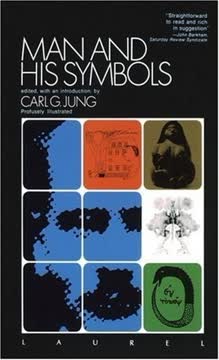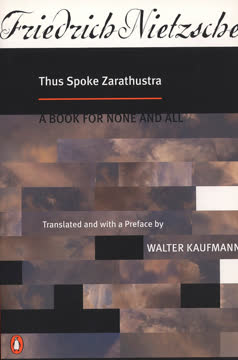Key Takeaways
1. Sensori-Motor Intelligence Builds Action-Based Reality
In the absence of language or symbolic function, however, these constructions are made with the sole support of perceptions and movements and thus by means of a sensori-motor coordination of actions, without the intervention of representation or thought.
Early action schemes. From birth to about two years, infants develop intelligence through actions and sensory experiences. This sensori-motor period progresses through six stages, starting from simple reflexes and culminating in complex action schemes like coordinating means and ends to solve practical problems. This intelligence is practical, focused on manipulating the environment to achieve goals.
Constructing reality. During this period, the infant builds fundamental cognitive substructures by organizing reality through action. Key achievements include:
- Object Permanence: Understanding that objects continue to exist even when out of sight.
- Space & Time: Organizing movements and perceptions into a coherent spatio-temporal framework.
- Causality: Developing a practical understanding of cause and effect through manipulating objects.
Copernican revolution. This stage marks a crucial shift from an initial state of egocentrism, where the infant doesn't differentiate self from the world, to a decentered perspective. The child begins to see themselves as one object among many in a universe structured by permanent objects, spatial relations, and objective causality, laying the groundwork for later thought.
2. Perception Supports, But Doesn't Create, Logical Structures
It is important, therefore, to determine the relative roles of perceptions and actions (and later operations) in the intellectual development of the child.
Perception's limitations. While perception provides the raw data of reality, it is not the source of logical structures or intelligence. Perception is primarily figurative, capturing static states, whereas intelligence is operative, dealing with transformations and relationships. Studies show that perceptual constancies (like size or shape constancy) appear earlier than operatory conservations, but they function differently.
Field effects vs. activities. Perceptual development involves two aspects: field effects (immediate, static impressions prone to illusions) and perceptual activities (active exploration, comparison, and anticipation). Activities improve with age and can correct some field effects, but they are often guided by developing intelligence rather than driving it. For example, children's exploration strategies become more systematic as their cognitive abilities advance.
Concepts go beyond perception. Concepts are not simply abstractions from perception. Logico-mathematical concepts, for instance, are abstracted from actions performed on objects, not just the objects themselves. Even physical concepts require a logico-mathematical structure that perception alone cannot provide, demonstrating that intelligence, rooted in action, structures how we interpret perceptual data.
3. The Semiotic Function Unlocks Mental Representation
It consists in the ability to represent something (a signified something: object, event, conceptual scheme, etc.) by means of a "signifier" which is differentiated and which serves only a representative purpose: language, mental image, symbolic gesture, and so on.
Transition to representation. Around 1.5 to 2 years, the semiotic (or symbolic) function emerges, allowing children to evoke objects or events not currently present. This is a fundamental shift from sensori-motor intelligence, which is tied to immediate action and perception. This function provides thought with a vastly expanded scope beyond the here and now.
Forms of the semiotic function. The appearance of the semiotic function is marked by several new behaviors that emerge almost simultaneously:
- Deferred Imitation: Imitating a model after it is no longer present.
- Symbolic Play: Using objects or actions to represent something else (e.g., pretending a block is a phone).
- Drawing: Creating graphic representations of reality.
- Mental Images: Internalized imitations that serve as internal representations.
- Language: Using arbitrary signs (words) to refer to objects, events, and concepts.
Imitation's role. Imitation is crucial in this transition, serving as a bridge between sensori-motor action and mental representation. Initially, imitation is direct action, but deferred and internalized imitation (mental images) become differentiated signifiers, freeing representation from immediate perceptual constraints and paving the way for thought.
4. Preoperatory Thought Assimilates Reality to the Self
Generally speaking, the fundamental difference between the preoperatory and the operatory levels is that at the preoperatory level assimilation to the child's own action prevails, whereas the operatory level is dominated by assimilation to the general coordinations of action, and therefore to the operations.
Egocentric perspective. From roughly 2 to 7 years, thought is characterized by egocentrism, not in a moral sense, but as a difficulty in taking perspectives other than one's own. The child struggles to differentiate subjective viewpoints from objective reality, leading to unique ways of understanding the world and interacting socially.
Limitations in reasoning. Preoperatory thought focuses on static configurations rather than transformations and lacks true reversibility. This is evident in:
- Non-Conservation: Believing quantity changes when appearance changes (e.g., liquid in a taller glass has more).
- Precausality: Explaining phenomena through finalism, animism, or artificialism, often assimilating physical processes to their own actions or desires.
- Figural Collections: Sorting objects based on perceptual patterns rather than logical class inclusion.
Symbolic play dominance. Symbolic play is a hallmark of this stage, serving as a means for the child to assimilate reality to their own needs and desires without external constraints. While crucial for emotional and symbolic development, this assimilation-dominant mode contrasts with the later equilibrium between assimilation and accommodation characteristic of operational thought.
5. Concrete Operations Organize the World Logically Through Objects
The operations involved in these problems are called "concrete" because they relate directly to objects and not yet to verbally stated hypotheses, as is the case with the propositional operations that we shall study in Chapter 5.
Emergence of logic. Around 7 to 11 years, children develop "concrete operations," internalized actions that are reversible and organized into coherent systems or "groupings." These operations allow for logical reasoning, but they are tied to concrete objects and events, not abstract propositions. The key psychological indicator of this stage is the acquisition of conservation.
Key concrete operations: Children master various logical structures:
- Conservation: Understanding that properties (substance, weight, volume) remain invariant despite changes in appearance, justified by identity, reversibility, or compensation.
- Classification: Organizing objects into hierarchical classes and understanding class inclusion (e.g., all roses are flowers, but not all flowers are roses).
- Seriation: Arranging objects in order based on a quantitative dimension (e.g., by length or weight).
- Number: Constructing the concept of number as a synthesis of class inclusion and seriation, leading to conservation of number.
Decentering and coordination. This stage involves significant cognitive decentering, allowing the child to coordinate different dimensions or perspectives simultaneously (e.g., height and width in conservation of liquid). This logical organization of the physical world through concrete manipulation and reasoning provides a stable framework for understanding reality.
6. Affective and Social Development Parallel Cognitive Stages
The affective and social development of the child follows the same general process, since the affective, social, and cognitive aspects of behavior are in fact inseparable.
Inseparable aspects. Cognitive development (structures) and affective/social development (energetics) are two sides of the same coin, progressing in parallel through similar stages of decentering. The ability to understand others' perspectives cognitively is linked to the ability to form reciprocal social and moral relationships.
Stages of social interaction:
- Initial Adualism (0-2): Lack of differentiation between self and others, affectivity centered on bodily states.
- Precooperation/Egocentrism (2-7): Social interactions exist but are centered on the child's own viewpoint; difficulty coordinating perspectives in communication or play. Moral judgment is heteronomous, based on external rules and objective consequences.
- Cooperation (7-11): Emergence of genuine cooperation, mutual respect, and coordination of viewpoints in games with rules and group tasks. Moral judgment becomes more autonomous, considering intentions and reciprocity, leading to a sense of justice.
From unilateral to mutual respect. The shift from heteronomy to autonomy in moral development is linked to the transition from unilateral respect (based on authority and constraint) to mutual respect (based on reciprocity and esteem). This decentering allows for a more objective understanding of social rules and values, mirroring the decentering in cognitive operations.
7. Formal Operations Enable Abstract, Hypothetical Reasoning
The great novelty of this stage is that by means of a differentiation of form and content the subject becomes capable of reasoning correctly about propositions he does not believe, or at least not yet; that is, propositions that he considers pure hypotheses.
Thinking about possibilities. Beginning around 11-12 years, adolescents develop formal operational thought, which is no longer tied solely to concrete objects or events. They can reason about abstract concepts, hypothetical situations, and verbal propositions, considering possibilities that may or may not reflect reality. This allows for hypothetico-deductive reasoning.
New logical structures. Formal thought involves two key structural advancements:
- Combinatorial System: The ability to systematically consider all possible combinations of elements or propositions, crucial for complex problem-solving and scientific reasoning.
- INRC Group: A structure integrating the two forms of reversibility (inversion/negation and reciprocity/symmetry) into a single system, allowing for more flexible and powerful logical transformations.
Liberation of thought. This stage represents a final, significant decentering, freeing thought from the constraints of the concrete and the immediate present. This cognitive liberation parallels the adolescent's increasing interest in abstract ideals, future possibilities, and theoretical reasoning, marking the transition to adult modes of thought.
8. Preadolescence Develops a Spontaneous Experimental Spirit
There is one remarkable aspect of thought at this stage which was largely overlooked because traditional instruction in schools almost totally ignored it (in defiance of the most obvious technical and scientific requirements of modern society), namely, the spontaneous development of an experimental spirit...
Reasoning about variables. The development of formal operations enables a new approach to problem-solving, particularly in scientific or experimental contexts. Adolescents can now systematically test hypotheses by manipulating variables and isolating factors, a skill largely absent in younger children.
Dissociation of factors. Confronted with a problem involving multiple potential causes (factors), the formal operational thinker can:
- Identify all possible factors.
- Formulate hypotheses about which factors are effective.
- Design experiments to test each factor independently while holding others constant.
- Draw logical conclusions based on the results, confirming or disconfirming hypotheses.
Induction and deduction. This stage allows for a more sophisticated interplay between induction (forming general laws from observations) and deduction (testing those laws through logical inference). The combinatorial system helps generate hypotheses, while the INRC group provides the logical framework for evaluating them and understanding complex relationships between variables, such as proportions or equilibrium.
Last updated:
Review Summary
The Psychology of the Child receives mixed reviews. Many readers find it dense, technical, and challenging to read, especially for non-academics. Some appreciate its insights into cognitive development stages, while others struggle with the archaic language and lack of practical applications. Positive reviews praise Piaget's groundbreaking theories and their impact on child psychology. Negative reviews cite the book's difficulty and outdated content. Overall, it's viewed as an important but demanding work, better suited for academic study than casual reading.
Similar Books
Download PDF
Download EPUB
.epub digital book format is ideal for reading ebooks on phones, tablets, and e-readers.













